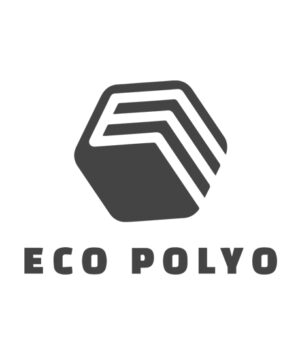LATI LASULF G/30 30% Glass Reinforced Polysulfone (PSU) (Unverified Data**)
| Port | Shanghai port,China |
| Trade Terms | FOB, CFR, CIF |
| Payment Terms | L/C, T/T, Western Union |
Description
Material Notes:
Description: Lasulf products are composed of polysulfone (PSU). They feature good thermal and mechanical properties such as excellent toughness, even at low temperatures, excellent dimensional stability low water absorption and exceptional resistance to hydrolysis allow their application also in case of very hot water. Reinforced Lasulfs are among the few thermoplastics guaranteeing good mechanical properties even at high temperatures. Resistance to creep is excellent, thermal resistance is outstanding: continuous no-load working temperature can reach 160°C (200°C for short periods of time). The Lasulfs are self-extinguishing without adding flame retardants.Specific Notes for this Material: UL94V-0 self-extinguishing, without halogens or phosphorus; low fume optical density and toxicity; 30% glass fiber; good mechanical properties, even at high temperatures; high rigidity; excellent dimensional stability; low coefficient of linear thermal expansion; excellent thermal resistance.Disclaimer from LATI: This document contains information based on average values as obtained from the results of laboratory tests and observations made on LATI materials. Tested materials were injection molded, used in their natural color, and conditioned in compliance with Standard ASTM D 618, procedure A. These values refer to LATI’s best technical and scientific knowledge at the moment of testing and cannot be used as a basis for the development of applications. For a better assessment of the materials, you are kindly requested to contact LATI’s technical or commercial offices, which are at your disposal and will supply detailed information on the most suitable characteristics for their intended use. With reference to DPR n.224 dated May 24, 1988, issued in accordance with EC Guide-lines 85/374, LATI Industria Termoplastici S.p.A. declines all responsibility arising from an improper use of the products described in this document.All data provided by LATI.
| Physical Properties | Metric | English | Comments |
|---|---|---|---|
| Density | 1.45 g/cc | 0.0524 lb/in³ | ISO 1183 |
| Water Absorption | 0.18 % | 0.18 % | at 23°C; ISO 62 |
| Linear Mold Shrinkage | 0.0025 cm/cm | 0.0025 in/in | LATI |
| Linear Mold Shrinkage, Transverse | 0.0025 cm/cm | 0.0025 in/in | LATI |
| Mechanical Properties | Metric | English | Comments |
|---|---|---|---|
| Hardness, Rockwell M | 92 | 92 | ASTM D785 |
| Tensile Strength, Ultimate | 127 MPa | 18400 psi | ISO 527 |
| 88.0 MPa
@Temperature 120 °C
|
12800 psi
@Temperature 248 °F
|
ISO 527 | |
| 103 MPa
@Temperature 90.0 °C
|
14900 psi
@Temperature 194 °F
|
ISO 527 | |
| 113 MPa
@Temperature 60.0 °C
|
16400 psi
@Temperature 140 °F
|
ISO 527 | |
| Flexural Modulus | 8.30 GPa | 1200 ksi | ASTM D790 |
| 7.85 GPa
@Temperature 120 °C
|
1140 ksi
@Temperature 248 °F
|
ASTM D790 | |
| 8.15 GPa
@Temperature 90.0 °C
|
1180 ksi
@Temperature 194 °F
|
ASTM D790 | |
| 8.20 GPa
@Temperature 60.0 °C
|
1190 ksi
@Temperature 140 °F
|
ASTM D790 | |
| Izod Impact, Notched | 0.850 J/cm
@Temperature -20.0 °C
|
1.59 ft-lb/in
@Temperature -4.00 °F
|
ASTM D256 |
| 0.850 J/cm
@Temperature -40.0 °C
|
1.59 ft-lb/in
@Temperature -40.0 °F
|
ASTM D256 | |
| 1.00 J/cm
@Temperature 23.0 °C
|
1.87 ft-lb/in
@Temperature 73.4 °F
|
ASTM D256 | |
| Charpy Impact Unnotched | 2.60 J/cm²
@Temperature -20.0 °C
|
12.4 ft-lb/in²
@Temperature -4.00 °F
|
DIN 53453 |
| 2.60 J/cm²
@Temperature -40.0 °C
|
12.4 ft-lb/in²
@Temperature -40.0 °F
|
DIN 53453 | |
| 2.70 J/cm²
@Temperature 23.0 °C
|
12.8 ft-lb/in²
@Temperature 73.4 °F
|
DIN 53453 |
| Thermal Properties | Metric | English | Comments |
|---|---|---|---|
| CTE, linear | 25.0 µm/m-°C
@Temperature 20.0 °C
|
13.9 µin/in-°F
@Temperature 68.0 °F
|
ASTM D696 |
| Deflection Temperature at 0.46 MPa (66 psi) | 190 °C | 374 °F | ASTM D648 |
| Deflection Temperature at 1.8 MPa (264 psi) | 181 °C | 358 °F | ASTM D648 |
| Vicat Softening Point | 186 °C | 367 °F | 50°C/h 50N; ISO 306 |
| Flammability, UL94 | V-0
@Thickness 1.50 mm
|
V-0
@Thickness 0.0591 in
|
|
| Oxygen Index | 38 % | 38 % | ISO 4589 |
| Glow Wire Test | 960 °C
@Thickness 2.00 mm
|
1760 °F
@Thickness 0.0787 in
|
IEC 695-2-1 |
| 960 °C
@Thickness 1.00 mm
|
1760 °F
@Thickness 0.0394 in
|
IEC 695-2-1 |
| Electrical Properties | Metric | English | Comments |
|---|---|---|---|
| Dielectric Strength | 18.0 kV/mm
@Thickness 2.00 mm
|
457 kV/in
@Thickness 0.0787 in
|
IEC 243-1 |
| Comparative Tracking Index | 125 V | 125 V | IEC 112 |
| Processing Properties | Metric | English | Comments |
|---|---|---|---|
| Melt Temperature | 300 – 350 °C | 572 – 662 °F | |
| Mold Temperature | 120 – 130 °C | 248 – 266 °F | |
| Drying Temperature | 120 – 130 °C | 248 – 266 °F | Not necessary for reinforced materials. Temperature can be reduced when using vacuum ovens. |
| Dry Time | >= 3 hour | >= 3 hour | Not necessary for reinforced materials. Drying time can be reduced when using vacuum ovens. |
| Descriptive Properties | Value | Comments |
|---|---|---|
| Heat Resistance – Ball Test (125°C) | Y | IEC 335 |
| Heat Resistance – Ball Test (165°C) | Y | IEC 335 |
| Injection Speed | high | |
| Needle Burner Test | Y | 1.47 mm |
| Y | 3.05 mm |



